Abstract
This study investigated the influence of intertrial interval duration on the performance of autistic children during teaching situations. The children were taught under the same conditions existing in their regular programs, except that the length of time between trials was systematically manipulated. With both multiple baseline and repeated reversal designs, two lengths of intertrial interval were employed; short intervals with the SD for any given trial presented approximately one second following the reinforcer for the previous trial versus long intervals with the SD presented four or more seconds following the reinforcer for the previous trial. The results showed that: (1) the short intertrial intervals always produced higher levels of correct responding than the long intervals; and (2) there were improving trends in performance and rapid acquisition with the short intertrial intervals, in contrast to minimal or no change with the long intervals. The results are discussed in terms of utilizing information about child and task characteristics in terms of selecting optimal intervals. The data suggest that manipulations made between trials have a large influence on autistic children's learning.
Full text
PDF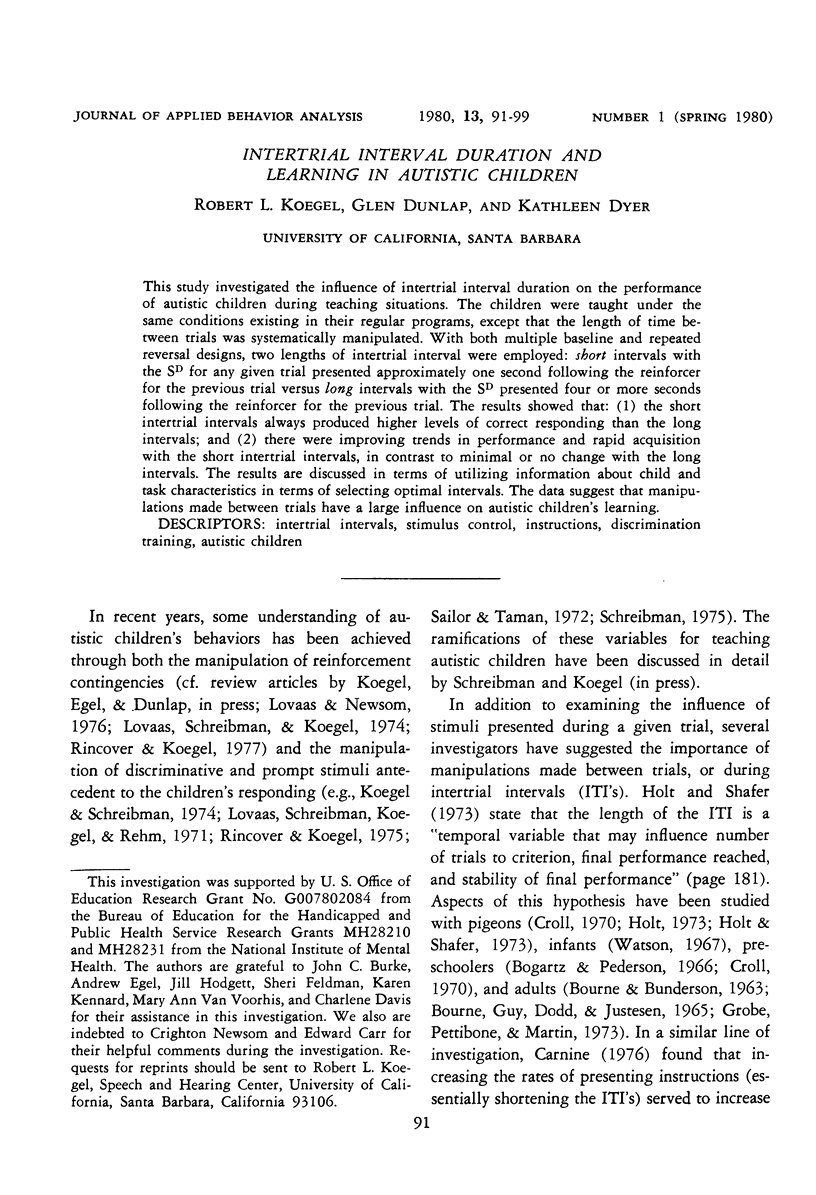
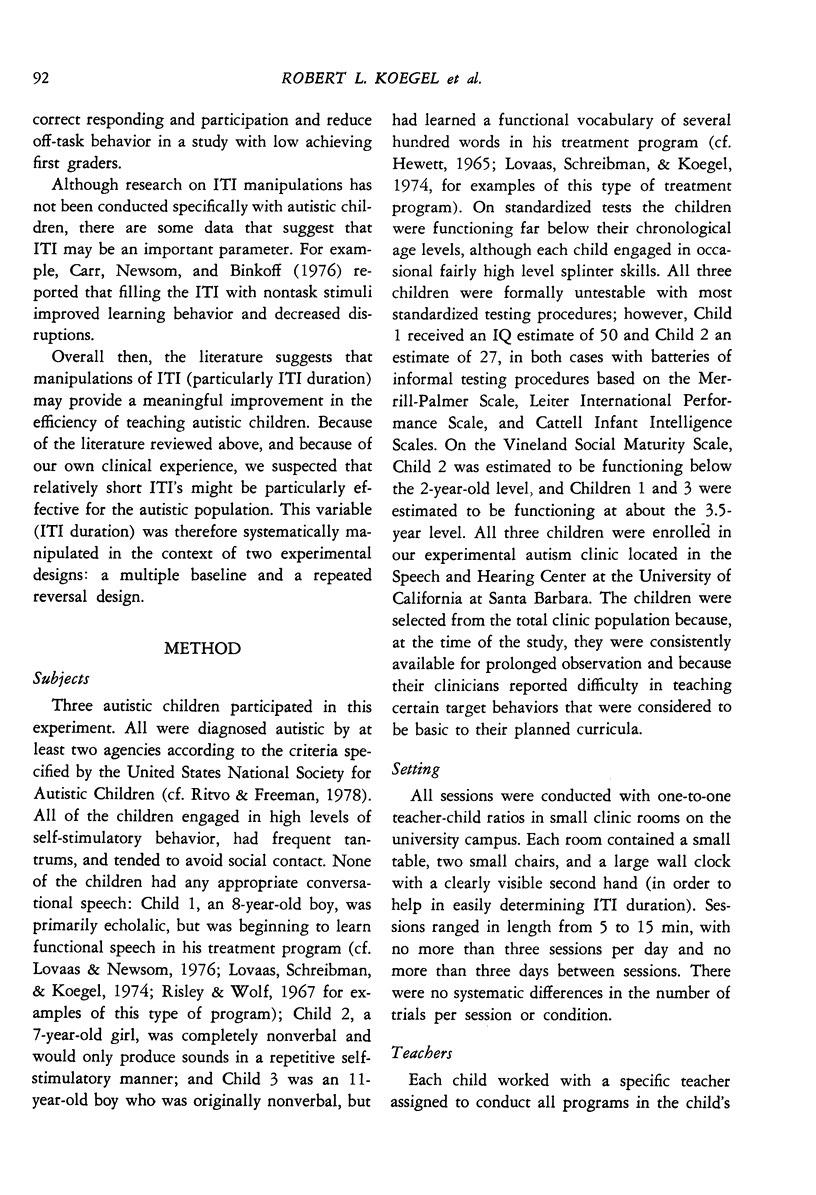
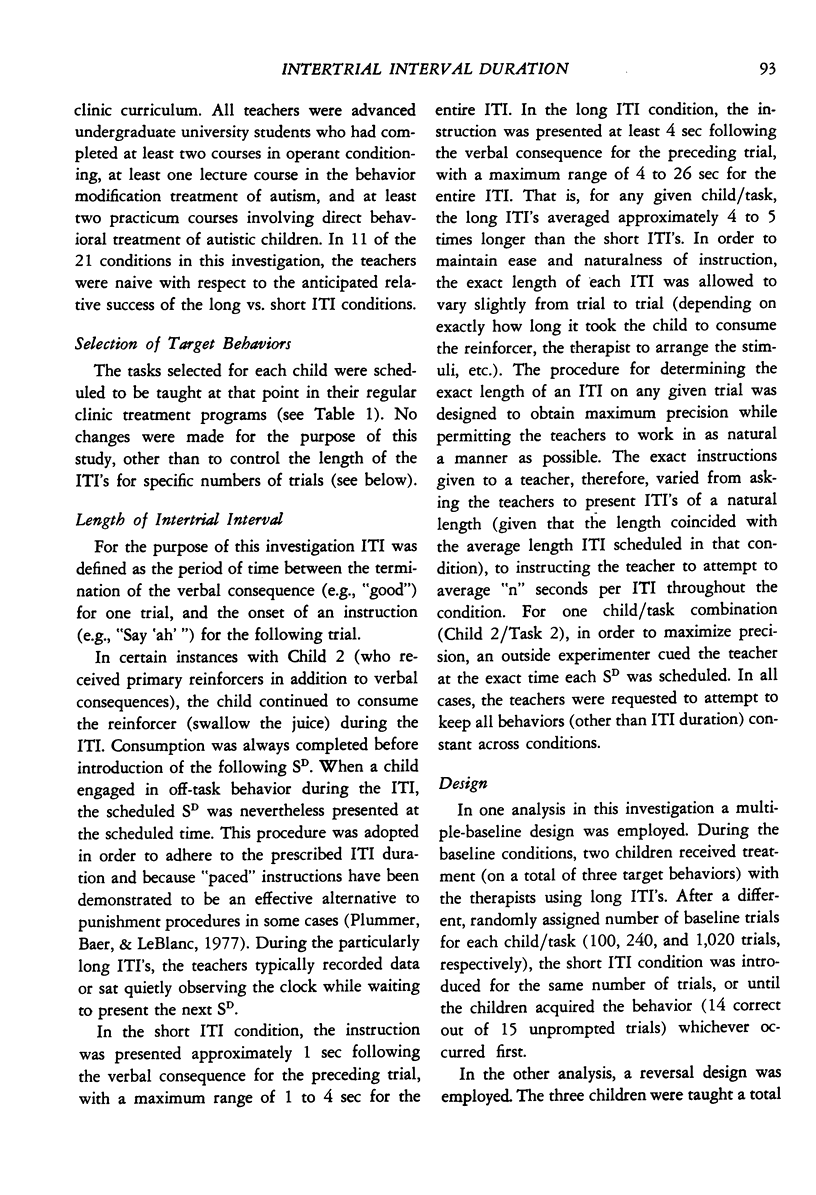
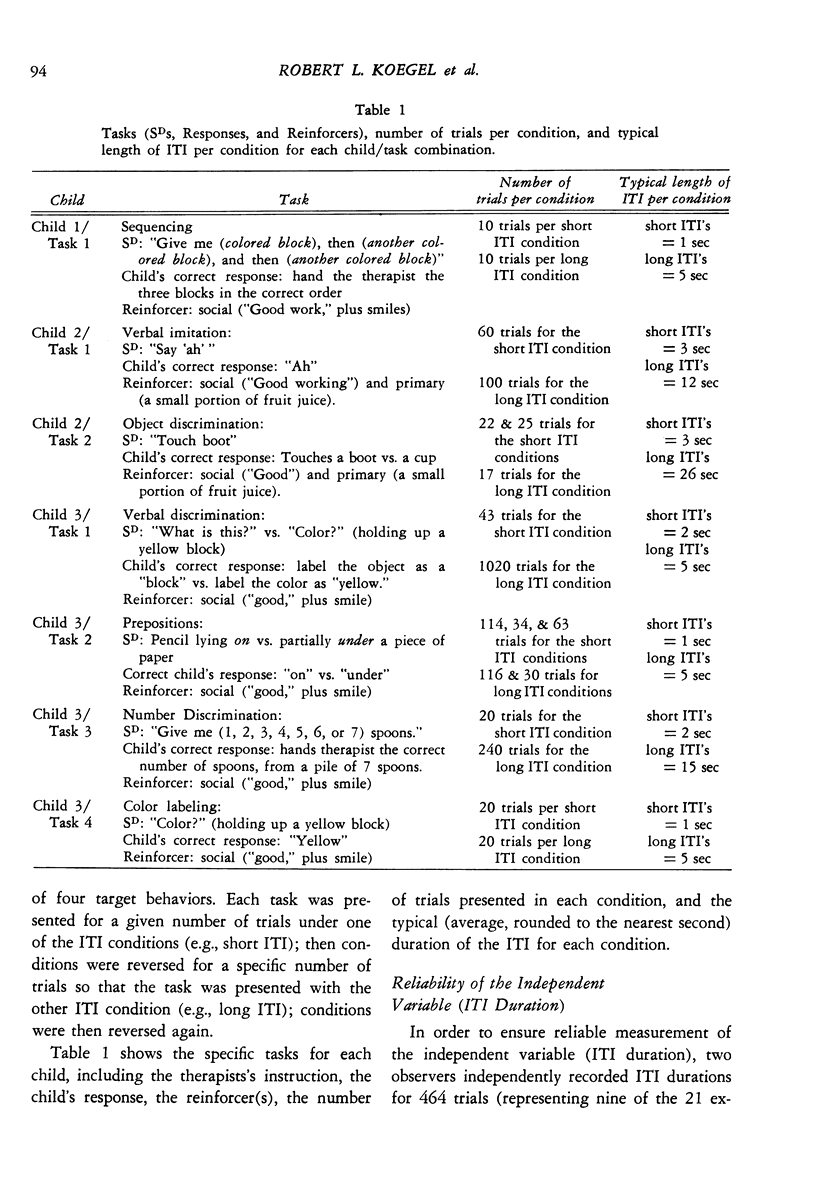
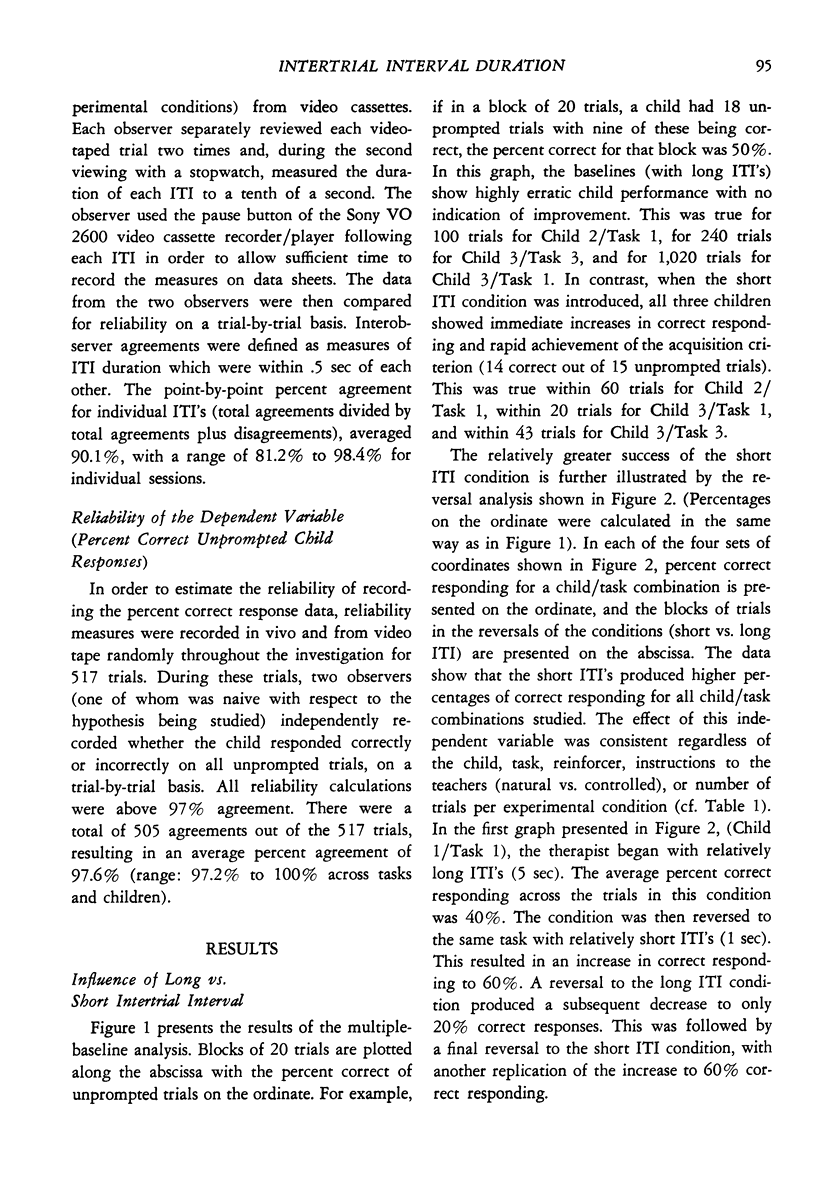
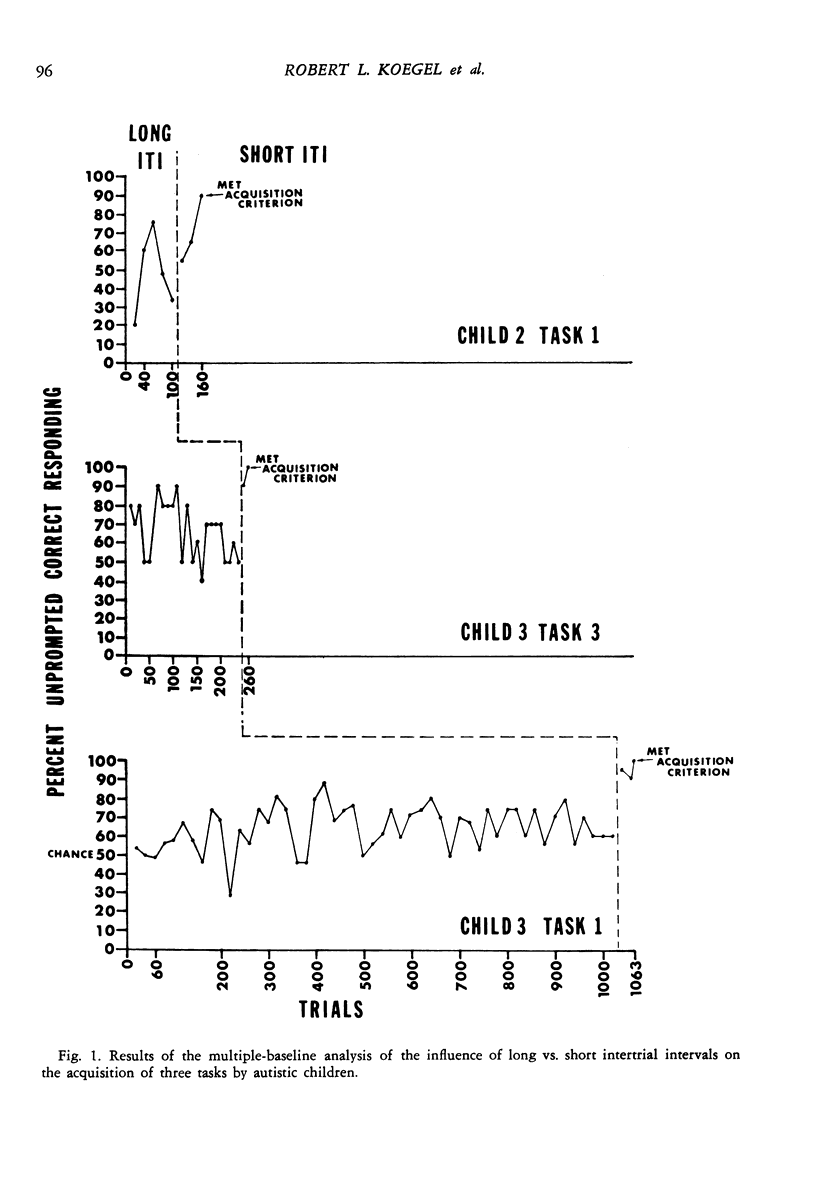
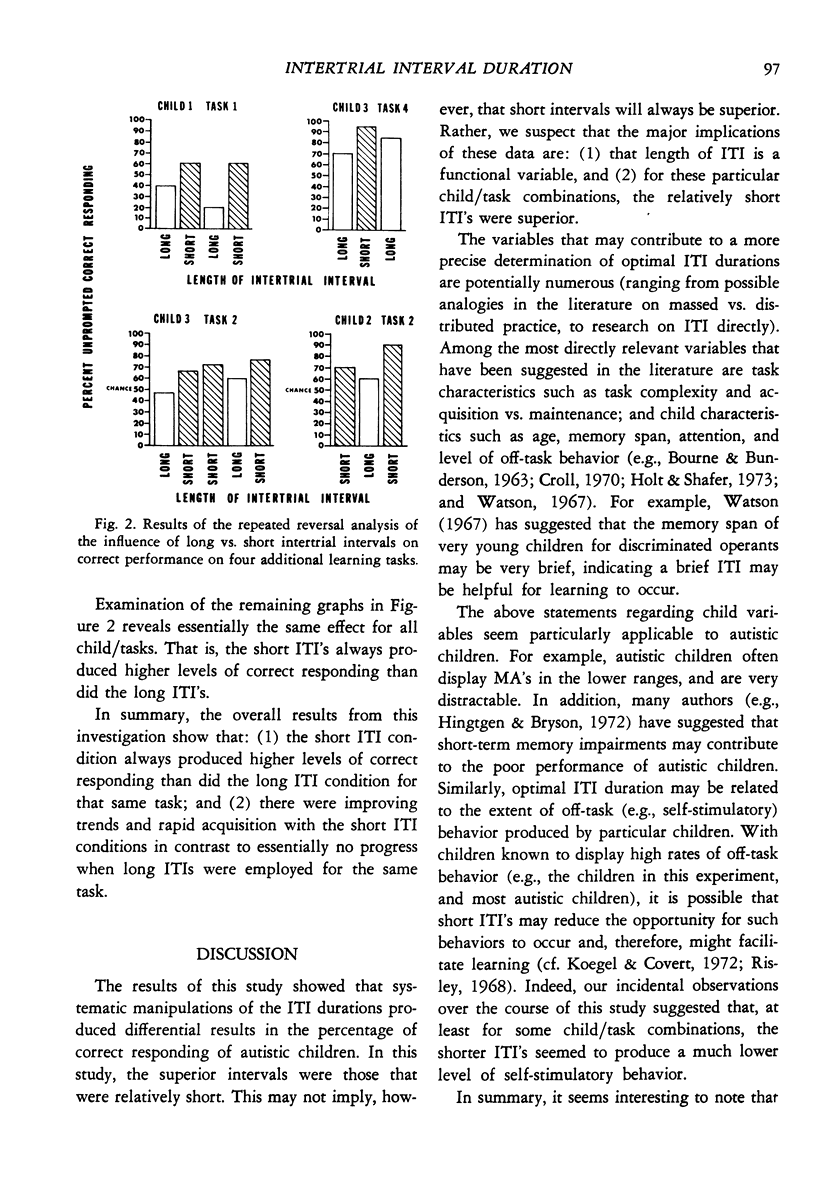
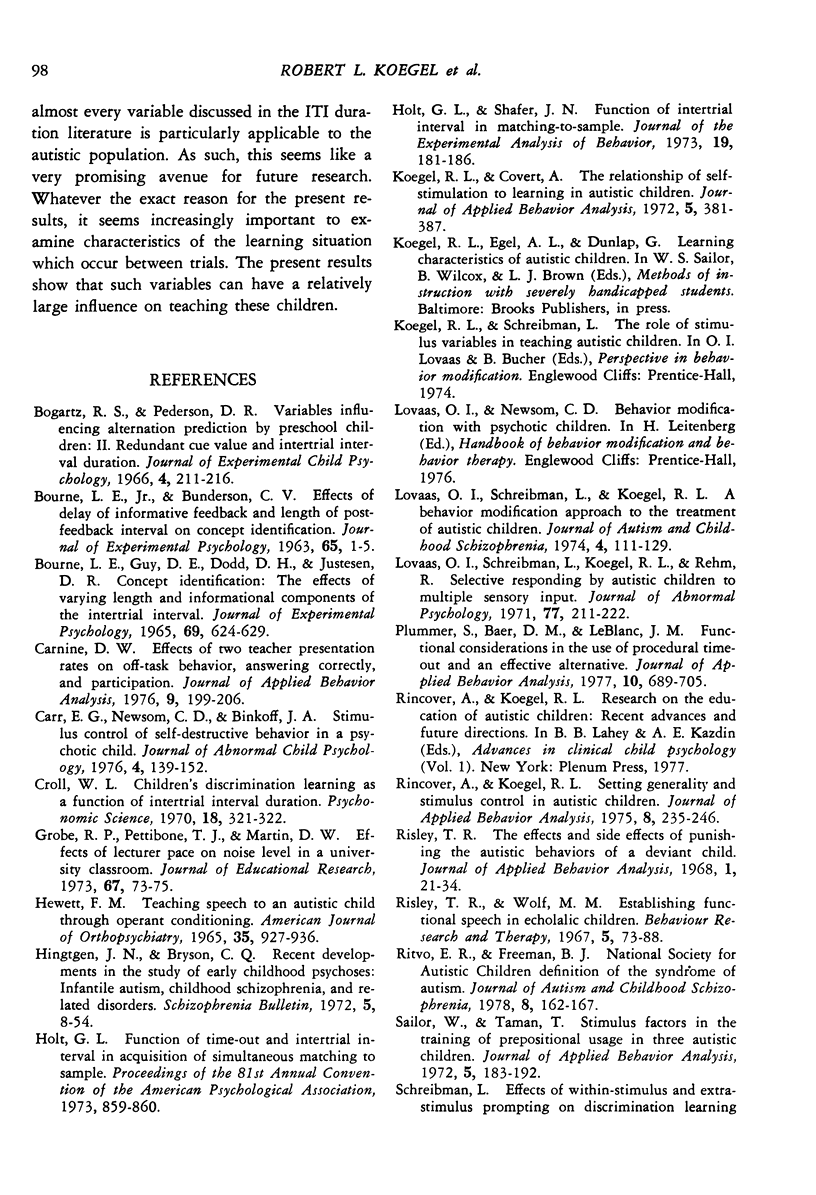

Selected References
These references are in PubMed. This may not be the complete list of references from this article.
- BOURNE L. E., Jr, BUNDERSON C. V. Effects of delay of informative feedback and length of postfeedback interval on concept identification. J Exp Psychol. 1963 Jan;65:1–5. doi: 10.1037/h0046994. [DOI] [PubMed] [Google Scholar]
- BOURNE L. E., Jr, GUY D. E., DODD D. H., JUSTESEN D. R. CONCEPT IDENTIFICATION: THE EFFECTS OF VARYING LENGTH AND INFORMATIONAL COMPONENTS OF THE INTERTRIAL INTERVAL. J Exp Psychol. 1965 Jun;69:624–629. doi: 10.1037/h0022018. [DOI] [PubMed] [Google Scholar]
- Carnine D. W. Effects of two teacher-presentation rates on off-task behavior, answering correctly, and participation. J Appl Behav Anal. 1976 Summer;9(2):199–206. doi: 10.1901/jaba.1976.9-199. [DOI] [PMC free article] [PubMed] [Google Scholar]
- Carr E. G., Newsom C. D., Binkoff J. A. Stimulus control of self-destructive behavior in a psychotic child. J Abnorm Child Psychol. 1976;4(2):139–153. doi: 10.1007/BF00916518. [DOI] [PubMed] [Google Scholar]
- Hewett F. M. Teaching speech to an autistic child through operant conditioning. Am J Orthopsychiatry. 1965 Oct;35(5):927–936. doi: 10.1111/j.1939-0025.1965.tb00472.x. [DOI] [PubMed] [Google Scholar]
- Holt G. L., Shafer J. N. Function of intertrial interval in matching-to-sample. J Exp Anal Behav. 1973 Jan;19(1):181–186. doi: 10.1901/jeab.1973.19-181. [DOI] [PMC free article] [PubMed] [Google Scholar]
- Koegel R. L., Covert A. The relationship of self-stimulation to learning in autistic children. J Appl Behav Anal. 1972 Winter;5(4):381–387. doi: 10.1901/jaba.1972.5-381. [DOI] [PMC free article] [PubMed] [Google Scholar]
- Lovaas O. I., Schreibman L., Koegel R. L. A behavior modification approach to the treatment of autistic children. J Autism Child Schizophr. 1974 Mar;4(2):111–129. doi: 10.1007/BF02105365. [DOI] [PubMed] [Google Scholar]
- Lovaas O. I., Schreibman L., Koegel R., Rehm R. Selective responding by autistic children to multiple sensory input. J Abnorm Psychol. 1971 Jun;77(3):211–222. doi: 10.1037/h0031015. [DOI] [PubMed] [Google Scholar]
- National Society for Autistic Children definition of the syndrome of autism. J Autism Child Schizophr. 1978 Jun;8(2):162–169. doi: 10.1007/BF01537864. [DOI] [PubMed] [Google Scholar]
- Plummer S., Baer D. M., LeBlanc J. M. Functional considerations in the use of procedural timeout and in effective alternative. J Appl Behav Anal. 1977 Winter;10(4):689–705. doi: 10.1901/jaba.1977.10-689. [DOI] [PMC free article] [PubMed] [Google Scholar]
- Rincover A., Koegel R. L. Setting generality and stimulus control in autistic children. J Appl Behav Anal. 1975 Fall;8(3):235–246. doi: 10.1901/jaba.1975.8-235. [DOI] [PMC free article] [PubMed] [Google Scholar]
- Risley T. R. The effects and side effects of punishing the autistic behaviors of a deviant child. J Appl Behav Anal. 1968 Spring;1(1):21–34. doi: 10.1901/jaba.1968.1-21. [DOI] [PMC free article] [PubMed] [Google Scholar]
- Risley T., Wolf M. Establishing functional speech in echolalic children. Behav Res Ther. 1967 May;5(2):73–88. doi: 10.1016/0005-7967(67)90001-0. [DOI] [PubMed] [Google Scholar]
- Sailor W., Taman T. Stimulus factors in the training of prepositional usage in three autistic children. J Appl Behav Anal. 1972 Summer;5(2):183–190. doi: 10.1901/jaba.1972.5-183. [DOI] [PMC free article] [PubMed] [Google Scholar]
- Schreibman L. Effects of within-stimulus and extra-stimulus prompting on discrimination learning in autistic children. J Appl Behav Anal. 1975 Spring;8(1):91–112. doi: 10.1901/jaba.1975.8-91. [DOI] [PMC free article] [PubMed] [Google Scholar]


